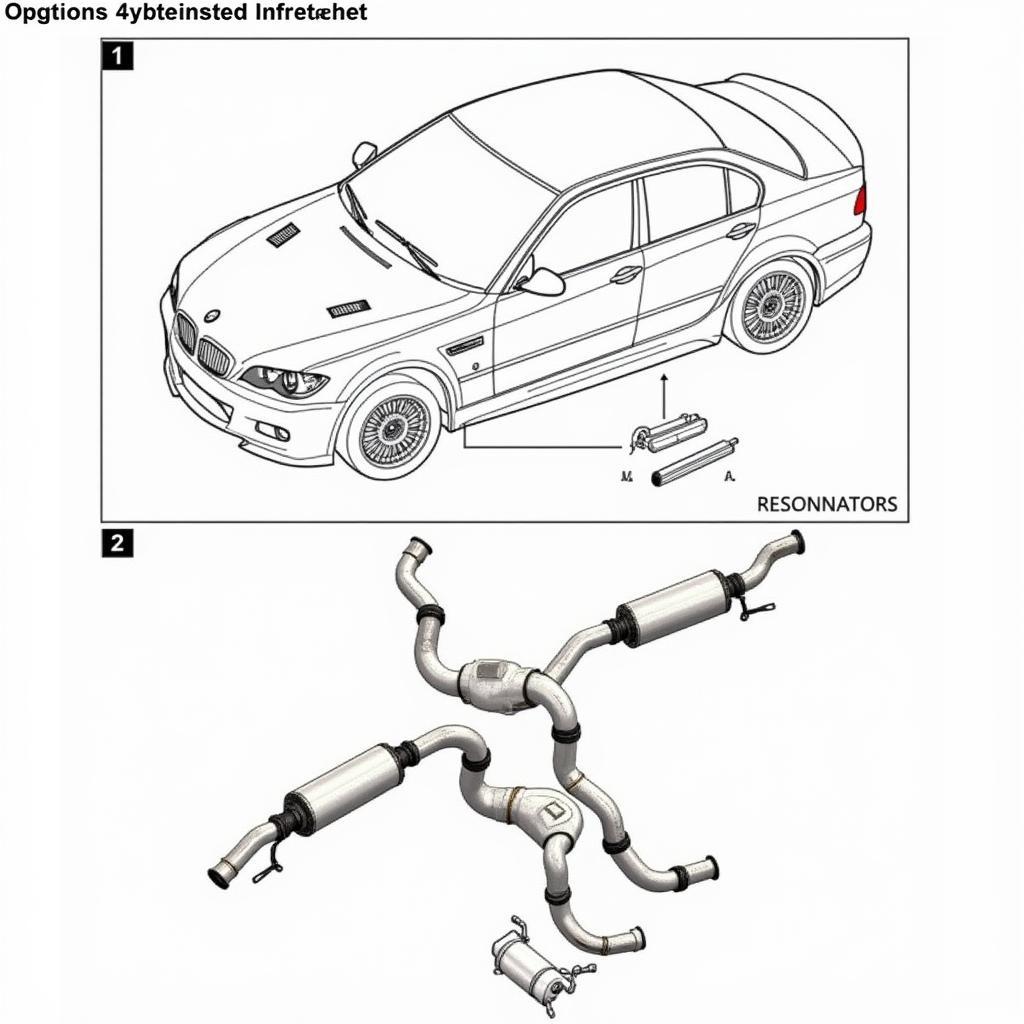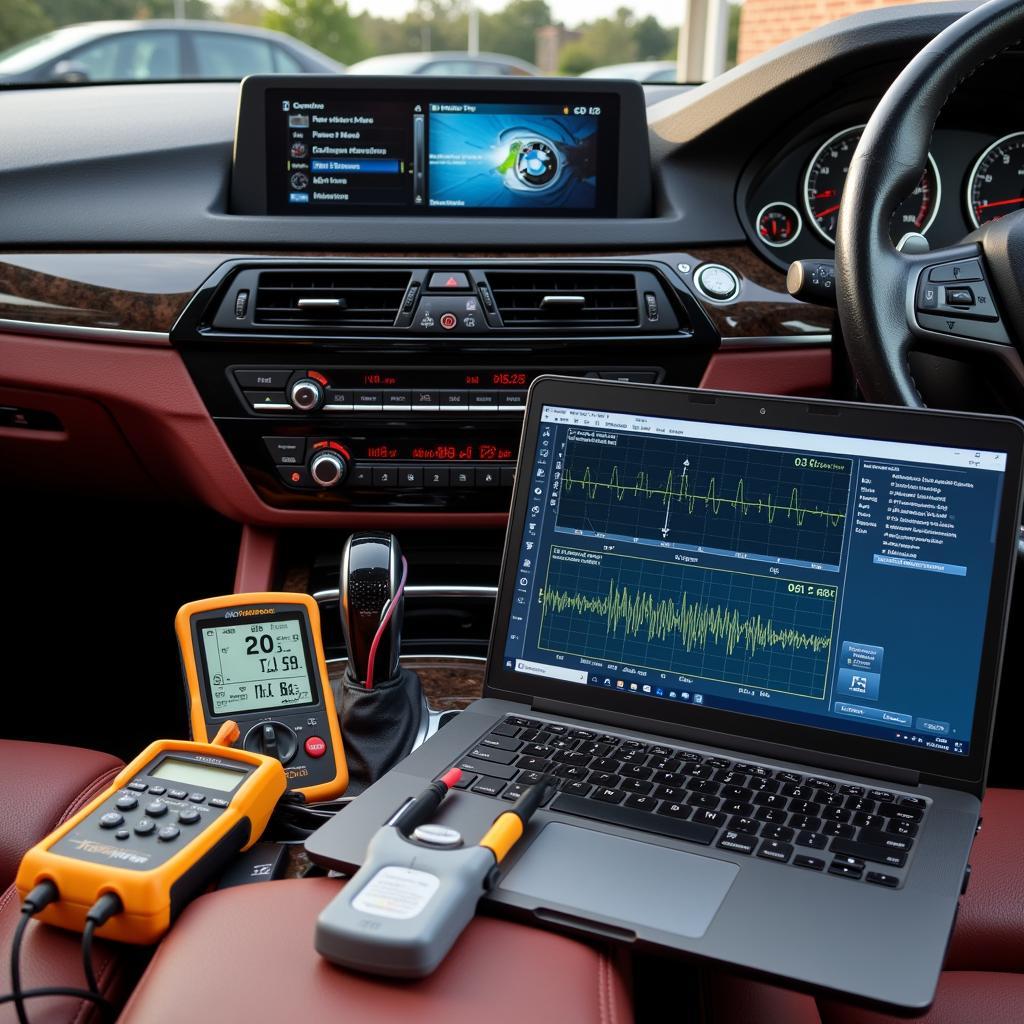The legendary BMW E90 M3 sound is a symphony of power and performance, a hallmark of the iconic S65 V8 engine. But what happens when that signature sound falters, changes, or disappears altogether? This comprehensive guide delves into the intricacies of the E90 M3’s audio profile, exploring common issues, diagnostic techniques, and solutions to restore its characteristic roar. We’ll also touch upon software solutions and remote programming options available through CARDIAGTECH.
Decoding the E90 M3’s Auditory Signature
The distinct sound of the E90 M3 isn’t just noise; it’s a carefully orchestrated blend of mechanical precision and acoustic engineering. From the intake growl to the exhaust note, every component plays a role in creating this iconic soundtrack. Understanding these elements is crucial for diagnosing and resolving any sound-related issues.
The heart of the E90 M3’s sound is the naturally aspirated 4.0-liter S65 V8 engine. Its high-revving nature, coupled with a meticulously designed exhaust system, produces a unique sound that distinguishes it from other performance cars. The intake system, including the air filter and intake manifold, contributes to the engine’s characteristic growl, particularly at higher RPMs. The exhaust system, with its carefully tuned mufflers and resonators, shapes the final sound, ensuring a balance between aggression and refinement.
Common BMW E90 M3 Sound Issues
Several factors can affect the E90 M3’s sound, ranging from minor annoyances to significant mechanical problems. Here are some of the most common issues encountered:
- Exhaust Leaks: Leaks in the exhaust system can cause a hissing or rasping sound, reducing performance and altering the overall sound profile.
- Worn Exhaust Components: Over time, mufflers, resonators, and other exhaust components can wear out, leading to a change in sound or a decrease in volume.
- Intake Issues: Problems with the air filter, intake manifold, or other intake components can affect airflow, resulting in a less pronounced engine growl.
- Throttle Position Sensor Malfunction: A faulty throttle position sensor can disrupt the engine’s air-fuel mixture, potentially causing unusual sounds and performance issues.
Identifying the source of the problem is the first step towards restoring the E90 M3’s signature sound. This often involves a combination of visual inspection, listening for specific sounds, and using diagnostic tools.
 BMW E90 M3 Exhaust System Diagram
BMW E90 M3 Exhaust System Diagram
Diagnosing and Resolving Sound Problems
Diagnosing sound issues often requires specialized tools and knowledge. CARDIAGTECH provides remote diagnostic services, utilizing advanced software to pinpoint the root cause of the problem. This can save time and money compared to traditional diagnostic methods. How can you improve your 2016 BMW 328 audio specs? Check out this guide.
Utilizing Remote Diagnostics and Programming
Remote diagnostics and programming can address various sound-related issues, including:
- Identifying Exhaust Leaks: Remote diagnostic software can analyze exhaust gas readings to detect leaks.
- Troubleshooting Sensor Issues: Remote diagnostics can assess the performance of various sensors, including the throttle position sensor and oxygen sensors.
- Optimizing Engine Performance: Remote programming can fine-tune the engine’s parameters to improve performance and restore the desired sound.
CARDIAGTECH specializes in remote programming, offering tailored solutions to enhance the E90 M3’s sound. For optimal Bluetooth audio quality in your BMW, explore our dedicated guide on bmw bluetooth audio quality.
Maintaining the E90 M3’s Sonic Character
Regular maintenance is essential for preserving the E90 M3’s iconic sound. This includes routine inspections of the exhaust system, intake system, and other relevant components. Addressing any issues promptly can prevent them from escalating into more significant problems.
Conclusion
The BMW E90 M3’s sound is an integral part of its identity. Understanding the intricacies of this auditory masterpiece empowers owners and technicians to diagnose and resolve any sound-related issues, ensuring the preservation of this legendary sonic signature. CARDIAGTECH offers remote diagnostic and programming solutions to help maintain and enhance the E90 M3 sound, keeping this iconic car roaring for years to come.
FAQs
- What causes the E90 M3’s unique sound? The S65 V8 engine, combined with a meticulously designed exhaust system, is the primary source of the E90 M3’s distinctive sound.
- How can I diagnose an exhaust leak? A hissing or rasping sound, along with reduced performance, can indicate an exhaust leak. Remote diagnostics can confirm the diagnosis.
- Can remote programming improve the E90 M3’s sound? Yes, remote programming can optimize engine parameters and enhance the sound profile.
- What maintenance is recommended for the E90 M3’s exhaust system? Regular inspections and prompt repairs of any leaks or damage are essential.
- How can I contact CARDIAGTECH for remote diagnostic services? Contact us via Whatsapp: +1 (641) 206-8880, Email: [email protected] or visit us at 276 Reock St, City of Orange, NJ 07050, United States. Our customer service team is available 24/7.


